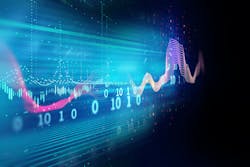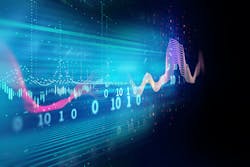While a picture can paint a thousand words, an image alone can be limiting. Without other factors - such as sound - the meaning behind a picture can be open to misinterpretation. We’ve all been in a virtual meeting thinking, ‘What on earth are they saying?’ when someone is talking but is still on mute. A relatively low-stakes and easily reconciled occurrence but imagine how important audio is when reviewing a malpractice suit. Video security needs to be more than an image, and audio has immeasurable value to the security industry, as it provides greater context to a situation.
Enter Stage Left
Audio is a growing capability in video security. While this is not a new concept, this intelligent feature is only just now gaining traction and will soon become a ‘must-have’ for security administrators. Existing technology can detect specific sounds, such as screams, gunshots, glass breaking, or abnormally loud engines. Video-only cameras wouldn’t be able to pick up on these factors, but cameras using audio detection and classification can help pinpoint what’s happening and from where. As a result, security professionals would be better aware and more in tune with their surroundings.
Needless to say, a camera is only as good as its field of vision. When an incident happens outside of the camera’s scope, those managing security cameras are completely unaware of what’s going on. Audio adds another layer to video security, consequently making safeguarding people and property a two-dimensional affair. Not only is this possible, but some security cameras and their video management systems (VMS) are able to alert users to sounds that are deemed suspicious, like a loud bang in the middle of the night, but also of their direction, even if it’s outside the security cameras’ field of view.Forensic Value
Being alerted to suspicious sounds and activity - as it’s happening - means that individuals and security personnel are aware of incidents in real-time. Audio live streaming also enables security operators to see and hear ongoing events and respond accordingly. This proactive approach to security suggests that events such as a robbery could be stopped before the perpetrators leave the premises. Those with access to the VMS could then notify the police before or during an occurrence rather than simply after the fact.
On the other hand, audio will still play a crucial role after something has happened: it can be used to support post-event investigations. The addition of sound allows for a clearer re-enactment of any incident that occurs. It provides much-needed context to a given situation, helping victims, and bringing criminals to justice. This is a phenomenon we should expect to see more of as audiovisual security cameras become more prolific.
The Ethics of it All
With new technology comes new regulation. We cannot expect this audio aspect to go unchecked. Nor should it. The security versus privacy debate continues, and we must see where this feature fits into the argument.
Some people would prefer to give up more of their privacy in order to ensure their safety, whereas others would feel better if less of their data and personal information was out in the open. Video security and surveillance techniques such as live facial recognition have been criticized by human rights groups such as Big Brother Watch for infringing on people’s rights and discriminating against certain minority groups. However, audio can learn from the issues video security has encountered. Administrators can choose between ‘always recording’ and detecting particular sound events (e.g., screams), which means that snippets rather than reams of conversations are recorded and stored. In doing so, security is maintained but privacy infringement is limited.
Regardless of where you sit in the privacy versus security debate, consent is always key. It’s crucial that individuals know that audio (in addition to visuals) is being recorded, especially when in or around places of work or in public places. Like any new or increasingly available technology, recording audio in video security would need to be regulated as best to both protect people but also respect their privacy. Complying with national or local legislation is paramount.
Transformation is the Goal
Audiovisual capabilities have the potential to transform any industry where video security is already used. In an educational setting, it eliminates the ‘he said, she said’ element when a teacher has to discipline students who have misbehaved. For retailers, the addition of audio enables them to get more insight into an incident. This would better protect staff, customers, and the shop itself from abuse and theft, respectively.
Seeing is Believing, and Hearing is Knowing
Video security changed the game for many sectors, but it’s due time these fields were shaken up. Sometimes just video simply isn’t enough. Audio offerings will completely reshape the way we understand security and protection. Adding sound provides more detail to any given event, consequently allowing better context to be established. Having the combination of both audio and video means that we know exactly what happened and when.
About the Author

Sam Lancia
Co-founder and Head of Video Engineering, Ava Security
Sam Lancia is a Co-founder and Head of Video Engineering at Ava Security. Sam has over 15 years’ experience as an engineer and has previously worked as the Head of App Development and Head of Spark Board Development. At Ava, Sam works to ensure that video security becomes simpler, smarter and more transparent. Since co-founding the company four years ago, Ava has grown its suite of cameras and video management tools across numerous industries: commercial, education, federal, healthcare and retail.


